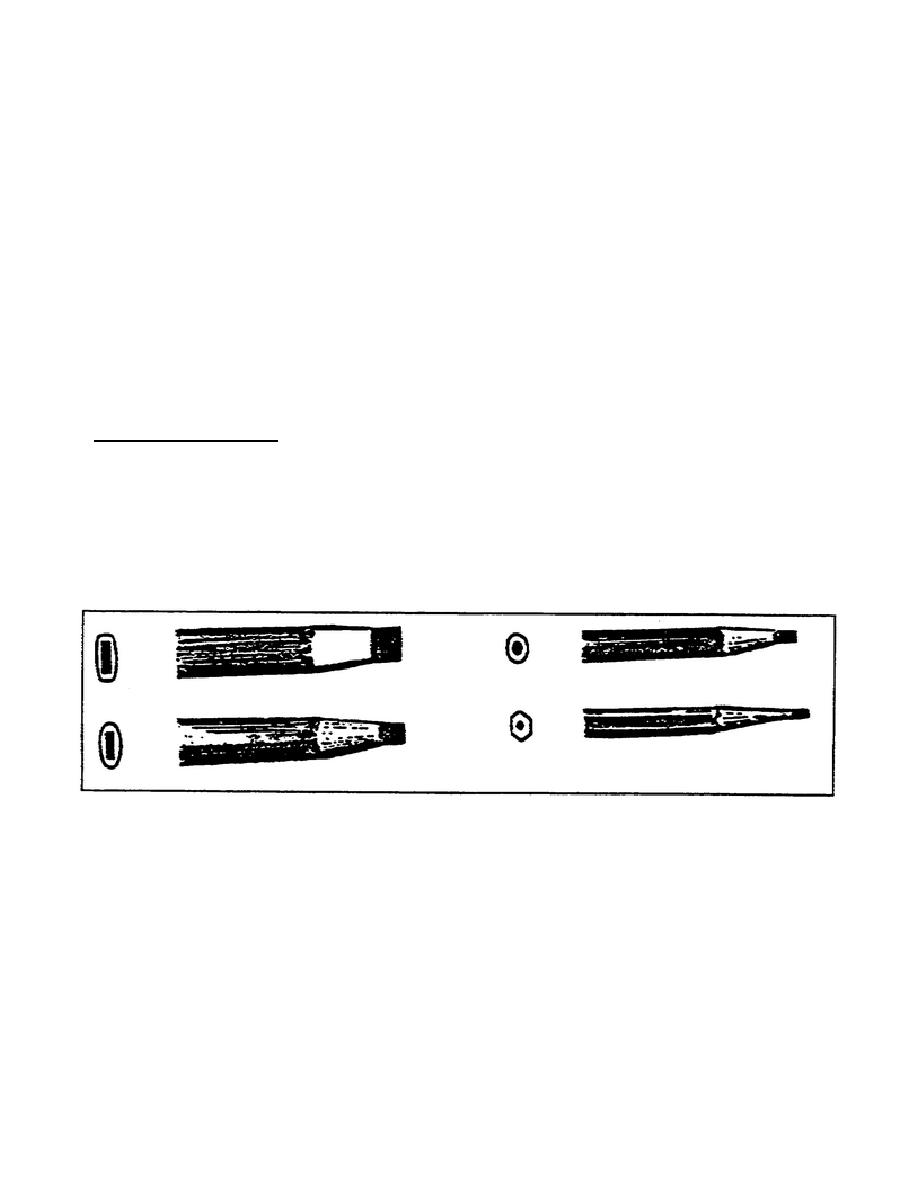
a. Hold the pencil with the thumb, forefinger, and second finger in
your normal writing position.
b. Use only enough pressure to hold the pencil.
If you grip the
pencil too hard, you will lock up your forearm muscles and you cannot
produce fluent, graceful strokes.
c. Draw vertical, slanting, and curved strokes with a steady even
movement with a slight pivoting at the wrist.
d. Avoid exerting too much pressure on the point. Excessive pressure
may dull or break the point or perhaps cut grooves on the surface of your
work.
e. The ideal pencil, for a given project, is one that does not smudge
(too soft), and does not leave unwanted marks (too hard) on your work.
3.
Making Your Point.
In order for your work to demonstrate your professionalism, you must
maintain the point on your pencil.
In general, a high quality pencil
sharpener will perform its task properly. However, you may need a chisel
point on a carpenter's pencil or other drawing pencil, to make the broad
flat strokes and thin lines necessary to construct both Gothic and Roman
letters (figure 2-4). Use the following steps to make a chisel point.
Figure 2-4.
Front and side views of chisel points
a. Use a sharp single-edged razor blade and cut away enough of the
topside and underside wood to expose about 1/4 inch of lead. Exposing too
much makes the point fragile and subject to breaking. Exposing too little
causes the point to wear away quickly.
b. Shave the lead and make it flat on the top and bottom.
Do not
exert too much pressure or the lead will break.
Make the sides of the
lead parallel.
2-4
SS0525



 Previous Page
Previous Page
